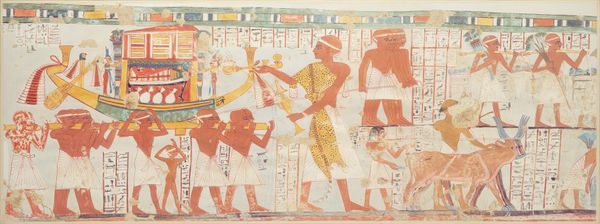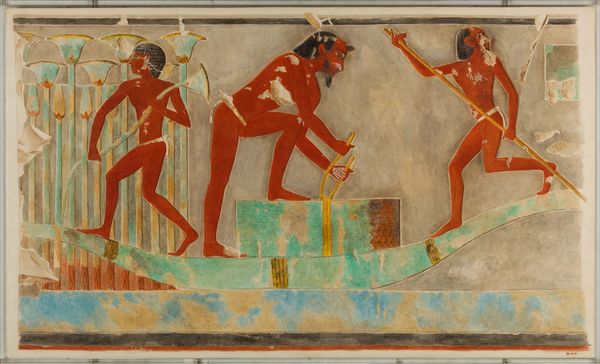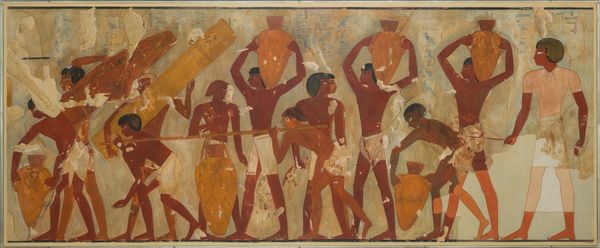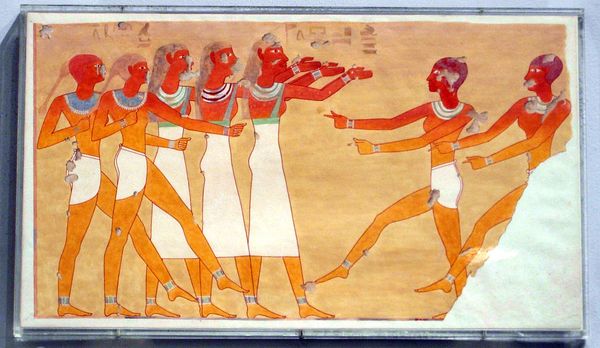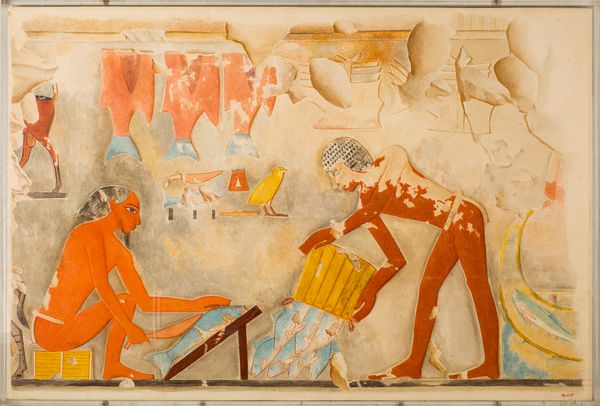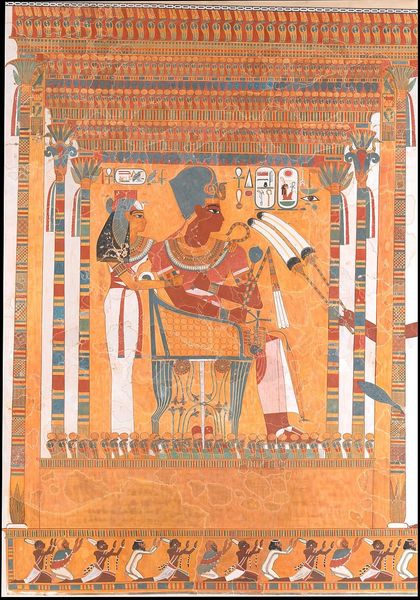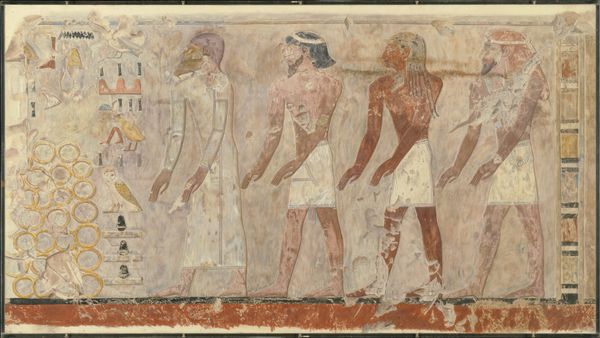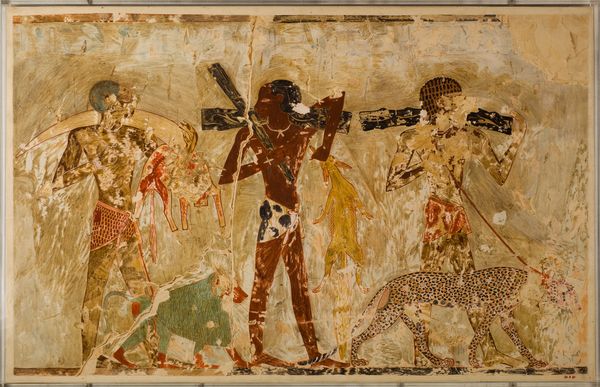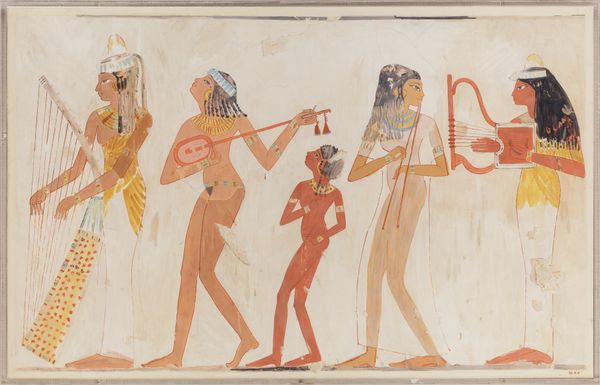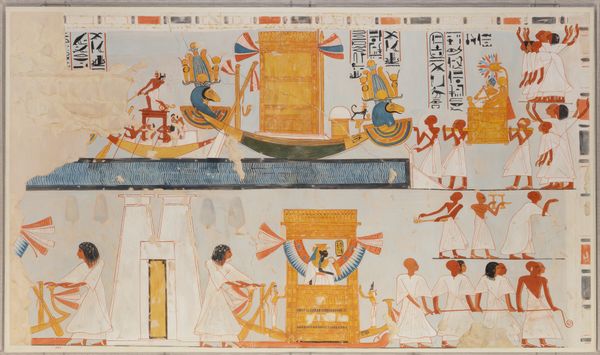
painting, fresco
#
water colours
#
painting
#
ancient-egyptian-art
#
figuration
#
fresco
#
tile art
#
egypt
#
ancient-mediterranean
#
men
#
genre-painting
#
history-painting
Dimensions: facsimile: h. 40 cm (15 3/4 in.); w. 51.5 cm (20 1/4 in.); scale 1:1; framed: h. 43.5 cm (17 1/8 in.); w. 54.9 cm (21 5/8 in.)
Copyright: Public Domain
Editor: Here we have "Men Splitting Papyrus," dating all the way back to 1473 BC, currently housed at the Met. I'm struck by how, even after all this time, you can clearly see these two figures going about their work. It feels so immediate. What story do you think it's telling, what do you see here? Curator: What *I* see…is a kind of patient hum, you know? The world breathes, and somewhere along the Nile, these men split papyrus. The color, that aged fresco… it speaks to me of time worn into the very walls. The economy, literally what people DID all day. Do you think they knew, crafting these everyday scenes, that we’d be peering back across millennia? Editor: I guess not really... the mundane immortalized, unintentionally. The way they are represented as kind of reddish too. How does that affect its reception? Curator: Ah, the red! Colour, like time, is a trickster. The red ochre, readily available, became shorthand for life, vitality. The very lifeblood made pigment. Look closer at how they're drawn. Flat, yes, almost like paper dolls, but brimming with gesture. Ancient Egyptian art wasn’t after photographic "reality", but spiritual reality! Think of these scenes like spells, designed to preserve life’s rhythm. What do you make of the man carrying the papyrus versus the one who is seated? Editor: The contrast between labor and rest is stark. One almost feels like a machine, whereas the other’s craft is highlighted. Thanks, that was clarifying. It feels good to think of art as a kind of immortality. Curator: Indeed, and that ancient heartbeat… it echoes on! Something to muse on, no?
Comments
No comments
Be the first to comment and join the conversation on the ultimate creative platform.
